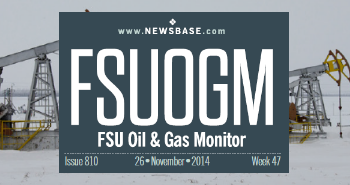Sabotage suspected as gas leaks reported at both Nord Stream 1 and 2

Natural gas leaks have now been reported at both Russia’s Nord Stream 1 and Nord Stream 2 pipelines, and while the reasons are unclear, the fact that both pipelines should suffer such incidents on the same day has prompted speculation of sabotage.
What we know
The Danish Energy Agency (DEA) reported on September 26 that it had been informed of a major drop in pressure at Nord Stream 2. The agency said its “preliminary assessment indicates that a leak has occurred from one of the two Nord Stream 2 pipelines in the Danish area south-east of Dueodde at Bornholm … from where natural gas is leaking.” The Danish Maritime Agency has told ships to avoid the area. German authorities have also said they are investigating the issue.
Nord Stream 2 was never brought into operation, as Germany halted the pipeline’s certification process in late February in response to Russia’s actions in Ukraine, days before Moscow launched its all-out invasion. The pipeline was nevertheless filled with gas last year as part of preparations for its launch.
Meanwhile, the Nord Stream 1 operating company said on September 26 that it had recorded a pressure drop, and was investigating the cause. In statements to Russian media the following day, the operator said that the destruction caused to the pipeline system was “unprecedented,” and that it was unclear how long it would take to fix. The Swedish Maritime Administration also confirmed on September 27 that leaks had occurred at Nord Stream 1 as well as Nord Stream 2.
Nord Stream 1 indefinitely shut down gas flows on September 5, with Gazprom citing technical difficulties relating to problems getting equipment repaired overseas because of Western sanctions. Gazprom had been curtailing its gas flow since June, and before its closure, it was operating at only 20% of its 55 bcm per year capacity.
The fact that there was little expectation that Nord Stream 1 would return to operation helps explain why the market’s reaction to the leaks was mute. Futures contracts at the Dutch TTF hub rose by only around 5% at the market’s opening on September 27, reaching €183/MWh by around 08:30 GMT. This followed a decline of around 6% on the previous day.
Causes?
Gazprom has not commented on the matter. However, Kremlin spokesman Dmitry Peskov told reporters on September 27 that sabotage could not be ruled out. "No option can be ruled out right now," he said, according to Reuters, adding that Moscow was very concerned with the situation, which would need a prompt investigations given the implications for the energy security of the "entire continent."
And there are no official claims that the pipelines were sabotaged. However, a report by German media group Tagesspiegel cited sources as saying that the government in Berlin was considering sabotage as the likely cause.
“We can’t imagine a scenario that isn’t a targeted attack,” a source familiar with the federal government’s assessment said, according to the newspaper. “Everything speaks against a coincidence.” Significant gas leaks along pipelines are rare, especially for modern ones like Nord Stream 1 and 2. The two pipelines leave the Russian shore at different points, using different infrastructure, making it seemingly unlikely that a technical problem further up the gas stream could have caused the simultaneous leakages.
The incidents come after Russia’s security services notably claimed on September 22 that they had successfully thwarted a planned Ukrainian attack at an oil and gas infrastructure site that supplies energy to Turkey and Europe. Ukraine has denied this. Russian security services did not specify which piece of infrastructure had been targeted, but the only route for Russian energy to both Turkey and Europe is the TurkStream pipeline. Like Nord Stream 1 and 2, it was built largely to allow Russia to bypass the Ukrainian gas transit system, reducing its reliance on Kyiv.



Follow us online